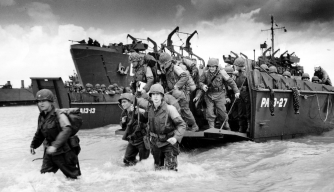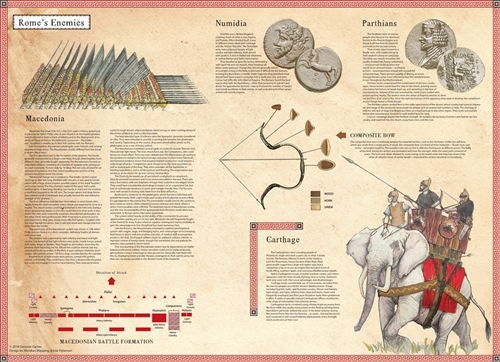-
Home / themoreiknowme
/ Blog
Was this valuable to you?
other links and editorials from Andrew

When you think of the most important battle in World War 2, many things come to mind, but one stands out: Normandy. This awful bloodshed happened on beaches, farms, hedgerows, and the once beautiful towns. It was truly one of the reasons the war finished quicker than had planned. Through this horror, legends were made, like Captain Winters (101st Airborne Division), and Major Howard (British 6th Airborne Division).
Before the assault, strategy was involved. The Germans had the whole coast from Brest to Leningrad covered with forts, artillery, and garrisons of men. The allies, with help of local friendly partisans (some were communists, but desperate times call for desperate measures) were required to find where in the whole Atlantic Wall there was a weak spot. There were two places of possible attack: Normandy, and Calais. Normandy was chosen for its wide beach and close access to the port of Cherbourg, which was the ideal spot for an invasion. The problem was it was pretty far away, which is where Calais comes in. Calais is an incredibly short distance from Dover, almost to the point where you can see France from the UK. However, the Germans expected an attack on Calais, and were ready. Due to recon planes, special ops, and partisans, we knew the Germans were ready to bring a large tank and air force to enhance Calais. So the allies duped them by placing the reckless, but good general Patton in charge of a fake army, and sending false reports that an invasion was going there. In the strategists’ brilliance, Normandy was chosen, and June 6, 1944 was chosen.
However, this wasn’t a simple landing on beaches attack, air and paratroopers were involved, with sabotage. The American 101st and 82nd Airborne took the town of Sainte-Mere-Eglise possibly 10 miles from the coast, while the British 6th Airborne cleared the way to the vital inland town of Caen. At around midnight, after a day of spies from the British SOE (Special Operations Executive) and American OSS (Office of Strategic Services) aided sabotage of equipment and railroads, the paratroopers stepped into the flack fire and horror of Normandy. Many of the paratroopers were lost and did not make it to their destinations, only about 30% made it to their landmarks. So, after clearing towns out near the beach, landings started. The salvoes smashed the German Batteries, and from the air, rockets and bombs were dropped on the sleepy Germans. Then, the LSTs and smaller craft set on the open seas, to be barraged by Howitzers (artillery), and MG (machine gun) fire. The majority of the men died once the safety of the landing craft doors flung open. From there, the tanks, motorized equipment, and infantry men saw dead bodies everywhere, and men clinging to the fortifications for dear life. However, when there were a few hundred men with machine guns and some artillery versus thousands of men with tanks and vehicles, and getting help from dozens of ships and hundreds of planes, the offenders eventually got through. Finally, the paratroopers linked up with the armored and infantry and supplies were delivered. The “day of days” was over, and Europe was one step more out of the clutches of tyranny.
 The fight in Normandy was far from over. The men pushed inward, and the fighting became rougher, once the Germans started to figure out what was going on. They mobilized forces converging on the attacking army, and put up fierce resistance, but they still not stop the dozens of divisions already there. From these awful battles in the hedgerows was where heroes, like Captain Winters, became famous. People risked their lives in these towns, such as Carentan, when an airborne company won fighting hundreds of the enemy. After liberating towns like Caen, Cherbourg, and Benouville, Normandy was taken. The fighting lasted nearly 2 months, and tens of thousands of casualties were left in the fields and beaches. The fight was over, but at the awful price.
The fight in Normandy was far from over. The men pushed inward, and the fighting became rougher, once the Germans started to figure out what was going on. They mobilized forces converging on the attacking army, and put up fierce resistance, but they still not stop the dozens of divisions already there. From these awful battles in the hedgerows was where heroes, like Captain Winters, became famous. People risked their lives in these towns, such as Carentan, when an airborne company won fighting hundreds of the enemy. After liberating towns like Caen, Cherbourg, and Benouville, Normandy was taken. The fighting lasted nearly 2 months, and tens of thousands of casualties were left in the fields and beaches. The fight was over, but at the awful price.
During this struggle, the allies gained a foothold on Europe. The allies liberated France, and later even Germany was saved from the clutches of fascism. This was all thanks to those brave men who jumped out of planes, flew in planes, walked out of ships, and fired from ships knowing that they may not last a few minutes more in their life. They did it so others lived, and in the end they talked about it to their children and even to the enemy when the world was free.
About Blog
My Blog! It's awesome. Travel, fencing, learning. Why don't you read some of my articles and add some of your own? Please? :)

